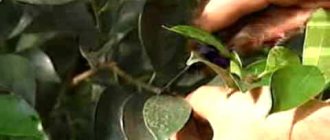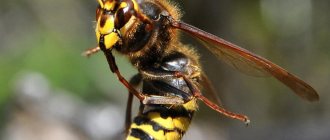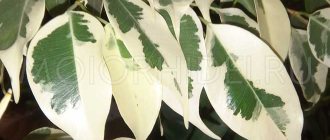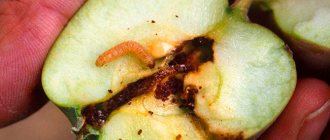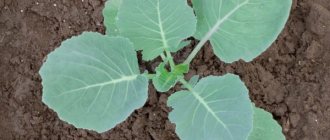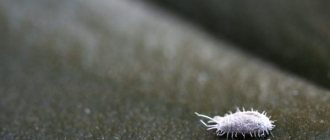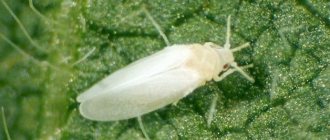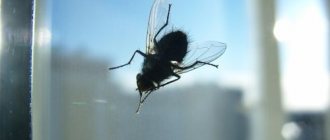When this pathology is discovered, novice gardeners may panic. And it’s completely in vain. These external manifestations do not always indicate the presence of diseases or pests. A natural process is possible.
The flower must first undergo a thorough inspection to rule out problems. If a real problem is identified, as well as the presence of some factors indicating existing deviations, treatment can begin.
Below we will discuss the reasons why the orchid's leaves have become sticky. The reasons can be very diverse.
What it is?
Indeed, sugar droplets can often be seen on the leaves of orchids . And they are found not only in indoor varieties, but also in wild flowers. The scientific name for this phenomenon is transpiration. The substance looks like dew drops, but if you look closely, you can see a sugary structure. They feel sticky to the touch and taste like sweet drops.
Attention : Extrafloral nectar may be physiological in nature, in which case it does not pose any threat to the plant.
Sticky leaves on the phalaenopsis orchid
If you do not find out the cause in time and do not take appropriate measures, you may even lose the plant.
What caused it and what needs to be done to prevent this from happening again?
External manifestations
Any unusual appearance on the leaves should concern the grower. This serves as a signal that something is wrong with the plant.
Stickiness usually comes in three forms :
cause such forms .
Main causes
The reasons for this unusual phenomenon can be varied.
Attracting insects . Orchids in their natural habitat attract insects for pollination through sweet nectar. In this case, the formation of sticky drops is a natural process of processing sugars inside the flower.- Damage by harmful insects . With poor immunity, an exotic flower is subject to attacks by pests, in particular: aphids, scale insects, whiteflies, mites, and scale insects. They feed on the sap of the plant. And the sticky layer is a kind of signal for help.
- Features of the variety . Some types of orchids regularly produce a sweet layer, while others, on the contrary, never do this. And here it’s not even a matter of conditions of detention, although they may be the same.
- Defeat by diseases . Sugar drops also indicate infection with the infectious disease powdery mildew. At the same time, a white coating is noticeable on the leaves, and at later stages – black fungal sporulation (you can learn about diseases of phalaenopsis orchid leaves and their treatment here).
- Deterioration of detention conditions. This point means:
- low room temperature;
- excessive watering;
- wet air;
- oversaturation with fertilizers.
We recommend watching a video about the reasons for the appearance of sticky drops on orchid leaves:
Fighting methods
If signs of mealybug activity are detected:
- The flower is isolated from other plants;
- Carry out mechanical cleaning - remove all ovaries and flowers, as well as infected leaves, treat hard-to-reach areas with a cotton swab or wash the plant under running warm water;
- Severely affected foliage is removed;
- The orchid is provided with comfortable conditions, the temperature and humidity are raised;
- The window sill and objects next to the diseased flower are wiped, since they may also contain pests.
At the final stage, the orchid is treated using folk remedies or insecticides.
What to do if sticky spots appear on the orchid?
Before proceeding with active measures to treat the plant, a visual inspection is required. First of all, we pay attention to the condition of the foliage.
- If, in addition to sugar drops, black spots are visible, this is a sign of powdery mildew. These dark spots can also be covered with a white coating, and every day the places of dislocation only increase (we talked about the causes of spots on phalaenopsis leaves here).
- Yellow areas on the leaves may indicate an excess of mineral fertilizers.
- There may be harmful insects on the reverse side of the leaf. If they are there, they are visible to the naked eye. It happens that insects stick to extrafloral nectar, as a rule, these are aphids.
The appearance of drops of any nature on orchid leaves is an unnatural phenomenon . And if you delay the process of diagnosis and treatment, you may soon lose your phalaenopsis.
Expert advice on caring for orchids with active guttation
Among the recommendations for caring for “crying” orchids, you can often find advice to wash the leaves of the plants with a shower. According to expert plant growers, this should not be done:
“Showering increases humidity and further stimulates guttation. Of course, it is better to get rid of sticky droplets on the leaves so that sooty fungus or more dangerous infections do not settle on them. But this must be done carefully, wiping the orchids with a slightly damp cotton pad.”
A. Davydovskaya, owner of the greenhouse, candidate of biological sciences
To reduce the manifestations of guttation, you need to normalize the air temperature and illumination of the orchid. The daily difference should not be more than 5-8 degrees, and daylight hours must be increased with the help of additional lighting.
Sticky drops on orchid leaves are a natural physiological reaction to certain environmental conditions. This does not require special measures or complex care. Simply removing the discharge is enough to prevent possible infections.
When should you worry?
- Of course, there is no reason to panic if the process of the appearance of sugar drops is physiological. It happens that domestic plants, just like their wild relatives, try to attract insects for pollination. Sweet nectar in this case serves as a kind of bait. At the same time, the orchid grows well, develops fruitfully, and there is no other reason for concern. Sweet baits into which insects fall can subsequently negatively affect the health of exotic fish. There may be a risk of contracting infectious diseases.
If the reason lies in excess nutrients, this is already serious. Through sweet drops, phalaenopsis removes excess nutrients. Which is dangerous, because an excess of fertilizing leads to the formation of rot, death of the peduncle and rosette.- If there are harmful insects and powdery mildew, it is worth worrying about. Immediately after confirming probable assumptions, begin active actions. The more advanced the condition of the orchid, the more difficult it will be to cure it.
How to treat stickiness
The course of further action depends on the root cause.
If these are errors in care, then an immediate transplant of the orchid and normalization of living conditions is required. If the reason is pests and infections, then you can’t get by with handy means; you need to treat the orchid with industrial preparations or soapy water with tobacco.
Step-by-step instructions for treating the disease
So, when the cause of sticky drops has been established, you need to take decisive action.
Due to a drastic change in care
Plants do not like to be stressed . So it tries to pay attention.
Optimal indoor conditions play an important role, therefore:
- set comfortable temperature and humidity parameters in the room;
- reduce the amount of mineral fertilizers consumed;
- minimize watering in winter;
- avoid sudden changes in temperature and drafts;
- Move the pot with the flower to the sunny side, protecting it from direct rays.
If the plaque is caused by pests
The orchid produces sweet nectar to protect itself . And the insects stick to it and die. Or another example of self-defense in the form of a food chain: sticky drops attract aphids, and they, in turn, ants, which can easily cope with leaf cutters.
However, upon inspection, the sticky substance may turn out to be traces of harmful insects that settle on the back of the leaf and feed on the sap of the flower. As a result, phalaenopsis withers and dies.
It’s not difficult to deal with such a problem, the main thing is to recognize it in time . Help:
- remove the diseased plant from healthy ones;
- remove insects with a cotton swab;
- reduce watering during cold seasons;
- moisten the space around the flower;
- If necessary, trim the affected areas;
- wipe the leaves with a soap solution at room temperature;
- if soap does not help, the plant should be sprayed with an insecticide solution, the drugs Phosfamide, Fozalon, Nurell-D are suitable;
- Once every 10-14 days, the pot with the orchid should be immersed in water, after adding two Alirina-B tablets;
- Weekly preventive rinsing of the pot is important.
When the infectious threat has passed and the orchid feels good, it can be returned to its original place.
You can learn more about what diseases and pests can destroy phalaenopsis and how to save the plant in this article.
If stickiness is needed to attract pollinators
When the phalaenopsis looks good and, in general, there are no questions about its health, then sugar nectar is a natural process of the orchid’s life . In this case, it serves to attract pollinators.
There is nothing frightening about such an unusual phenomenon, and medical procedures should not be carried out. The only thing is that if the sticky layer spoils the appearance of the flower, it is washed off.
If the cause of plaque is an infection
A sweet substance is one of the symptoms of powdery mildew. Infectious disease in orchids develops quickly, so do not waste time. Help:
- isolate infected exotics;
- rinse the orchid with warm water;
- wait until it dries;
- treat the flower with Aktara and Actellik.
Advice : Before using chemicals, first treat with traditional methods.
Analytics: Which method of removing plaque is better?
The editors of the 32-top website compared plaque cleaning at home and in the dentist's chair and highlighted the advantages and disadvantages of these methods.
Cleaning plaque at home
Advantages:
- Very low cost;
- Does not require visits to the doctor, can be done at home;
- Doesn't take much time;
- Suitable for those who are afraid of dentists.
Popular articles Albizia Lankaran (Crimean acacia) and other species
Flaws:
- Not very effective;
- Some areas of the teeth are difficult to reach, and plaque from them cannot be easily removed;
- Cleaning with certain products, such as baking soda or peroxide, can damage the enamel.
Dental floss
Professional cleaning at the dentist
Advantages:
- Very effective, allows you to completely get rid of plaque;
- Teeth become noticeably lighter;
- Safe for enamel.
Flaws:
- Higher cost;
- Takes longer due to the need to visit a doctor.
IMPORTANT: As a result, we can conclude that home cleaning is a temporary measure for very busy people. It is better to allocate time and money at least once a year and visit the dentist for professional cleaning
Prevention
Having made sure that the sticky layer is relatively safe for your pet, it is important to create optimal conditions to protect the orchid from serious diseases :
- Temperature maintenance in summer: +22-25ºС, in winter +16-18ºС.
- Humidity 50-60%.
- Use only disinfected, tested substrate for planting and transplanting.
- Lighting is required to be diffused; in summer it is better to shade bright rays.
- Be sure to regularly ventilate the room.
- Moisturize the orchid once a week. The soil should dry out completely between waterings.
- Use high-quality water, without impurities and salts.
- Orchids need to be fertilized 2 times a month, especially during the flowering period. Use fertilizers with a predominant content of potassium and iron.
- Spray with water daily.
Due to improper care or violation of the watering schedule, phalaenopsis roots, leaves and other parts of the plant dry, flowers and buds wither. Read our materials about how to take care of orchid roots to keep them healthy and how to recognize flower diseases.
Tags
Phalaenopsis about phalaenopsis Varieties of phalaenopsis Colors of phalaenopsis varieties of phalaenopsis watering phalaenopsis Diseases of phalaenopsis roots of phalaenopsis leaves of phalaenopsis Orchids Resuscitation of orchids for orchids for orchids grow an orchid in Flowering orchids Orchids help the plant. treat the plant from inside the plant. orchids sticky leaves orchids Sticky LeavesDiscovering Sticky LeavesManifestations of Sticky Leaves Sticky DropsWhy Sticky LeavesManifestations sticky leaves Sticky drops White sticky coating
violets why flower stalks indoors treat conditions comment nado varieties problems
Why does it bloom, but the plates dry, wither and fall off?
Problems with an orchid's leaf system are always the result of improper care.
Main causes of diseases:
- overheat;
- frostbite or a long period of exposure to a draft;
- not regular watering, which led to drought or excessive watering of the flower;
- root system diseases;
- the presence of harmful insects that are located in the soil, root system or on leaves.
Natural wilting occurs when their life cycle is over.
This usually happens with lower single plates. After the leaves wither, they need to be carefully cut off. After some time, new upper green leaves appear on the orchid.
Content errors causing the problem
When overwatered, the flower becomes covered with sticky drops, similar to dew. In this way, the flower tries to remove excess moisture that has entered its cells. If improper watering is systematic, the flower will not be able to remove excess liquid and will simply begin to rot.
Often the orchid “cries” due to excessive watering.
To prevent the flower from dying, it is necessary to organize the correct watering regime so that the root system can breathe oxygen between them. She needs it for the process of photosynthesis.
Mold
The formation of mold on a flower indicates the presence of fungi, which quickly spread through the air using microscopic spores.
A signal of mold infection is indicated by the formation of moldy fluff on the surface of leaves, roots or substrate.
Mold can be of different colors, depending on what pathogen has settled on the flower and can range from light gray to greenish. On orchids you can most often find white and black mold.
In order to get rid of mold, it is necessary to transplant the flower into new soil and pot, having previously treated all parts with a solution of copper sulfate.
